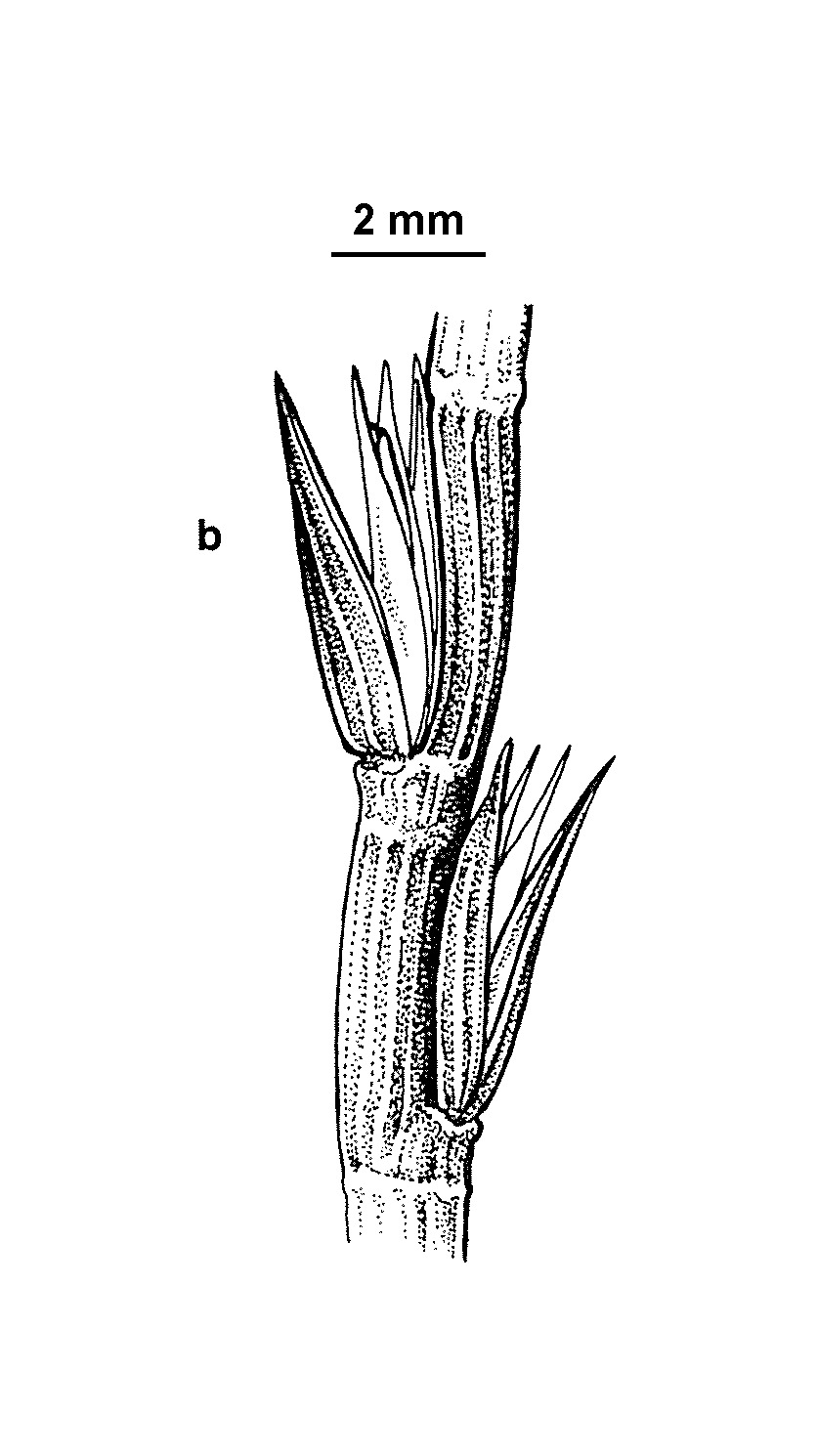Parapholis strigosa
(Dumort.) C.E.Hubb. Slender Barb-grassTufted, more or less erect, to 40 cm high. Leaves smooth glabrous; blade flat or folded, to 6 cm long and 2 mm wide; upper sheath not inflated; ligule minutely toothed, to 1 mm long. Spikes to 20 cm long, straight and rigidly erect, rarely purplish, mostly fewer than 8 per plant. Glumes subequal, 4–5-nerved, 4–6 mm long, slightly longer than internodes; lemma and palea thinly membranous, 1–2 mm shorter than glumes; anthers 1.5–4 mm long. Flowers Sep.–Jan.
MuM, Wim, GleP, Brid, VVP, RobP, MuF, GipP, OtP, WaP, Gold, CVU, DunT, EGL, WPro, HSF, HNF. Also naturalised in SA, NSW. Indigenous to western European coasts (rare in Mediterranean). Largely coextensive in Victoria with the Parapholis incurva species along coasts (e.g. Portland, Anglesea-Queenscliff area, Western Port coasts, Shallow Inlet, Lakes Entrance), but less common inland (e.g. Mildura, Mt Arapiles, Lake Bolac, Strathmerton areas).
Walsh, N.G. (1994). Poaceae. In: Walsh, N.G.; Entwisle, T.J., Flora of Victoria Vol. 2, Ferns and Allied Plants, Conifers and Monocotyledons, pp. 356–627. Inkata Press, Melbourne.
 Spinning
Spinning


